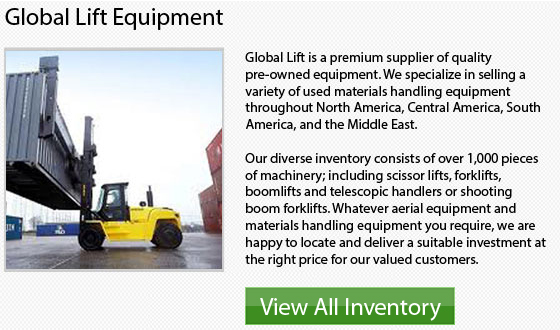
Here are add-ons which are useful for narrow aisle lift trucks:
Side shift: Side shift is an option that allows the lateral movement of the load without having to move the model. This allows loads to be accurately placed.
Tilt mast: The optional tilt mast enables the forks to shift both forwards and backwards. This is perfect in situations where loads aren't completely level. In order to gain greater stability when transporting a truck which is loaded, the mast could be tilted back.
Extendable forks: Extendable forks help the reach of a forklift to allow for the stacking of pallets one in front of the other. This is known as double deep loading.
Operator platforms: Operator platforms allow some NA forklifts to lower and raise the operator whilst the forks are being lowered or raised. This offers utmost visibility and control when handling loads at heights of 6 to 9 meters.
Lift Truck on a Ramp
Lift truck drivers must be well taught on the equipment. They must be assessed and licensed or certified. It is very essential for anyone utilizing a lift truck to be educated about safety concerns and rules. Drivers have to understand how to make adjustments in situations where the weight of the load changes the center of gravity or on uneven surfaces. Safety guidelines include safely using a forklift on a ramp, which is frequently occurring since the operator would typically have to drive down and up ramps to load and unload containers.
Suggestions for Using a Lift Truck on a Ramp
1 Drive slowly while approaching a ramp and when driving up and down the ramp. The possibility of accidents is higher while driving fast as this could upset the equipment's center of gravity.
2 Drive the forklift in reverse while moving up an incline on a ramp when not carrying a load.
3 Drive forward when moving down an incline on the ramp with no load.
4 Tilt the forks slightly back to shift the center of the load to the machine's front, when moving up or down a ramp while carrying a load.
5 In order to make the load more stable, drive forward up a ramp when carrying a load.